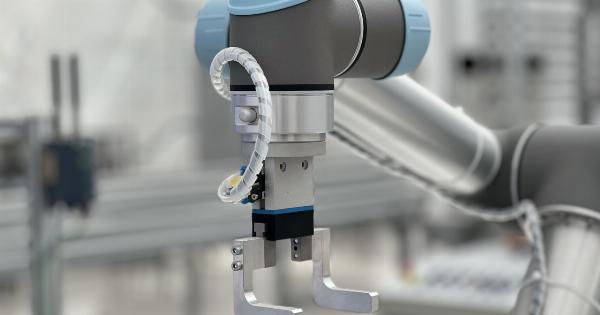Hip replacement surgery, also known as hip arthroplasty, is a common procedure performed to replace a damaged or worn-out hip joint.
It is often recommended for individuals suffering from severe hip pain and limited mobility due to conditions such as osteoarthritis, rheumatoid arthritis, or hip fractures. While hip replacement surgery has proven to be highly effective in improving quality of life for patients, the procedure itself can be quite invasive and result in post-operative pain.
However, recent advancements in surgical techniques and technologies have paved the way for a breakthrough in hip replacement surgery, promising a painless experience for patients seeking relief from hip joint problems.
Introduction to Traditional Hip Replacement Surgery
Traditional hip replacement surgery involves the removal of the damaged hip joint and replacing it with an artificial joint made of metal, ceramic, or plastic components.
However, the procedure usually requires a large incision, extensive muscle dissection, and a lengthy recovery period. Although effective, patients often experience post-operative pain, longer hospital stays, and extended rehabilitation.
The Breakthrough: Minimally Invasive Hip Replacement Surgery
Minimally invasive hip replacement surgery is a groundbreaking approach that offers numerous advantages over the traditional method.
This revolution in hip replacement surgery focuses on reducing surgical trauma, minimizing tissue damage, and accelerating recovery.
Key Advantages of Minimally Invasive Hip Replacement Surgery
The benefits of this breakthrough technique are significant and include:.
1. Smaller Incisions
Unlike traditional hip replacement surgery, which typically requires an incision of 8 to 10 inches, minimally invasive hip replacement surgery involves smaller incisions measuring around 2 to 4 inches.
These smaller incisions result in less tissue damage, reduced bleeding, and decreased post-operative pain.
2. Preservation of Muscles and Tendons
Minimally invasive hip replacement surgery aims to preserve muscles and tendons surrounding the hip joint, unlike traditional surgery, which involves significant muscle dissection.
By minimizing muscle and tendon damage, patients can experience improved post-operative function and shorter rehabilitation periods.
3. Faster Recovery
Due to the reduced tissue damage and preservation of muscles and tendons, patients who undergo minimally invasive hip replacement surgery can expect a faster recovery.
They can often begin walking with assistance within hours after surgery, resulting in shorter hospital stays and a quicker return to daily activities.
4. Reduced Scarring
The smaller incisions used in minimally invasive hip replacement surgery lead to reduced scarring compared to the larger incisions required for traditional surgery.
This is particularly advantageous for patients concerned about the cosmetic appearance of surgical scars.
5. Decreased Risk of Infection
The smaller incisions and reduced tissue damage associated with minimally invasive hip replacement surgery contribute to a decreased risk of infection.
A smaller incision means less exposure to external contaminants during and after the surgery, minimizing the chances of infection.
State-of-the-Art Technologies Enhancing the Procedure
In addition to the surgical advancements, state-of-the-art technologies have also played a crucial role in ensuring a painless hip replacement experience. Two notable technologies are:.
1. Computer-Assisted Navigation
Computer-assisted navigation systems provide real-time feedback to surgeons during the procedure. By using pre-operative imaging and tracking tools, surgeons can navigate accurately, ensuring optimal positioning of the artificial joint components.
This technology allows for increased precision and improved outcomes.
2. Robotic-Assisted Surgery
Robotic-assisted surgery involves the use of a robotic arm controlled by the surgeon. This technology enables highly precise incisions, bone resections, and implant placement.
Robotic-assisted surgery ensures an individualized and customized approach, leading to better patient satisfaction and decreased complications.
Choosing the Right Surgeon for a Painless Hip Replacement
While the breakthrough in hip replacement surgery offers promising results, choosing the right surgeon is vital to ensure a painless and successful experience. Patients should consider the following factors when selecting a surgeon:.
1. Experience and Expertise
It is crucial to choose a surgeon with extensive experience and expertise in performing hip replacement surgeries. Surgeons who specialize in minimally invasive techniques are preferred, as they have mastered the skills required for optimal outcomes.
2. Reputation
Research the surgeon’s reputation by reading patient reviews and testimonials. A surgeon with a positive reputation and a history of successful surgeries is more likely to provide a painless experience.
3. Advanced Facilities
Ensure that the surgeon operates in a hospital or clinic equipped with advanced facilities and cutting-edge technologies. State-of-the-art facilities contribute to a seamless surgical experience and a higher likelihood of painless recovery.
Conclusion
Thanks to the breakthrough in hip replacement surgery, patients now have access to a less invasive, more comfortable, and painless alternative to traditional hip replacement procedures.
Minimally invasive surgery, combined with state-of-the-art technologies, offers numerous benefits, including smaller incisions, preservation of muscles, faster recovery, reduced scarring, and decreased risk of infection. However, it is essential to carefully select a highly experienced surgeon to ensure a successful and pain-free hip replacement experience.


























